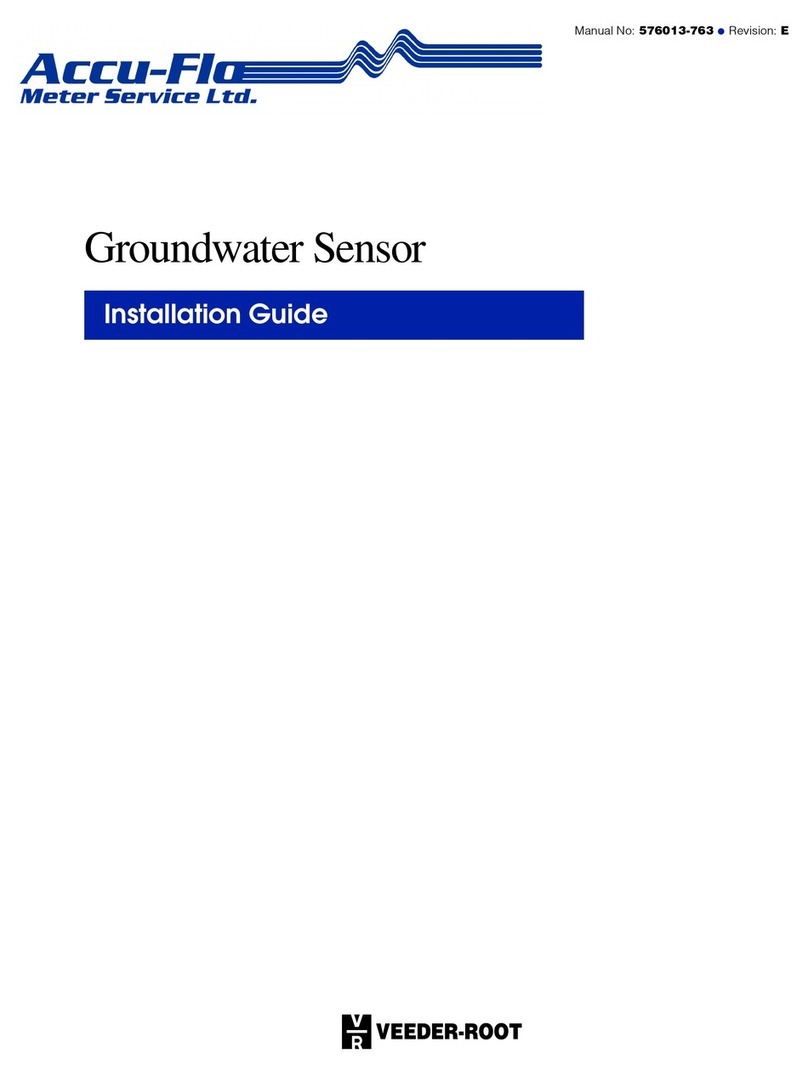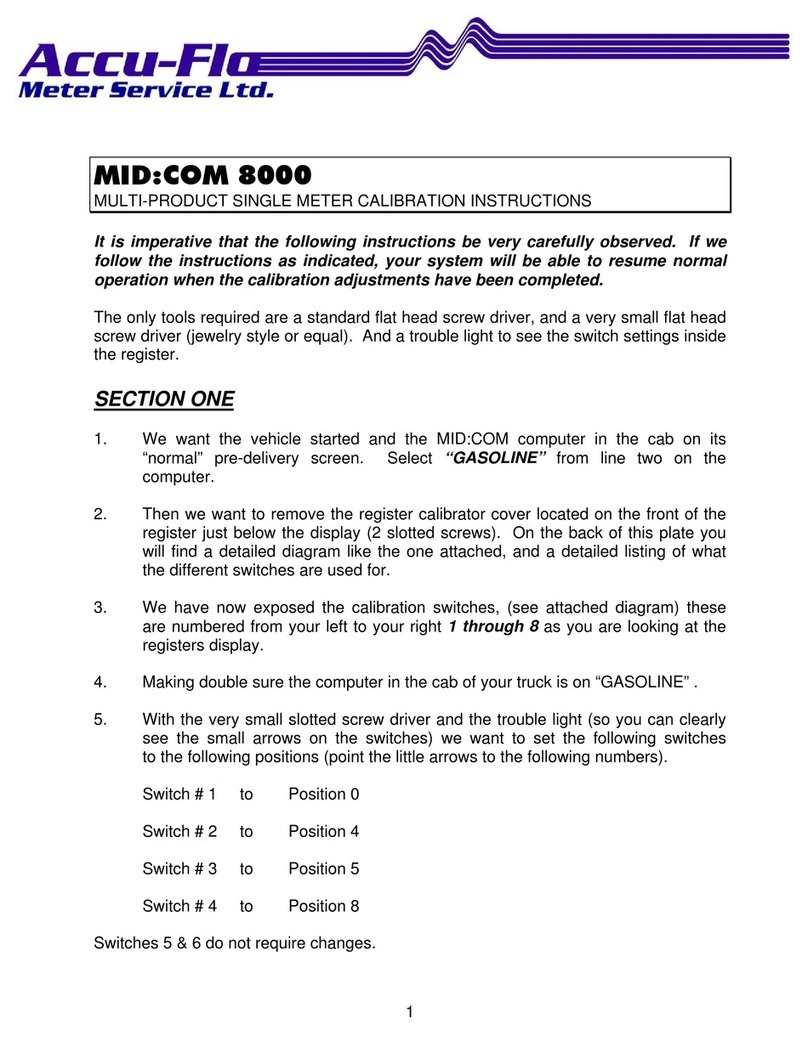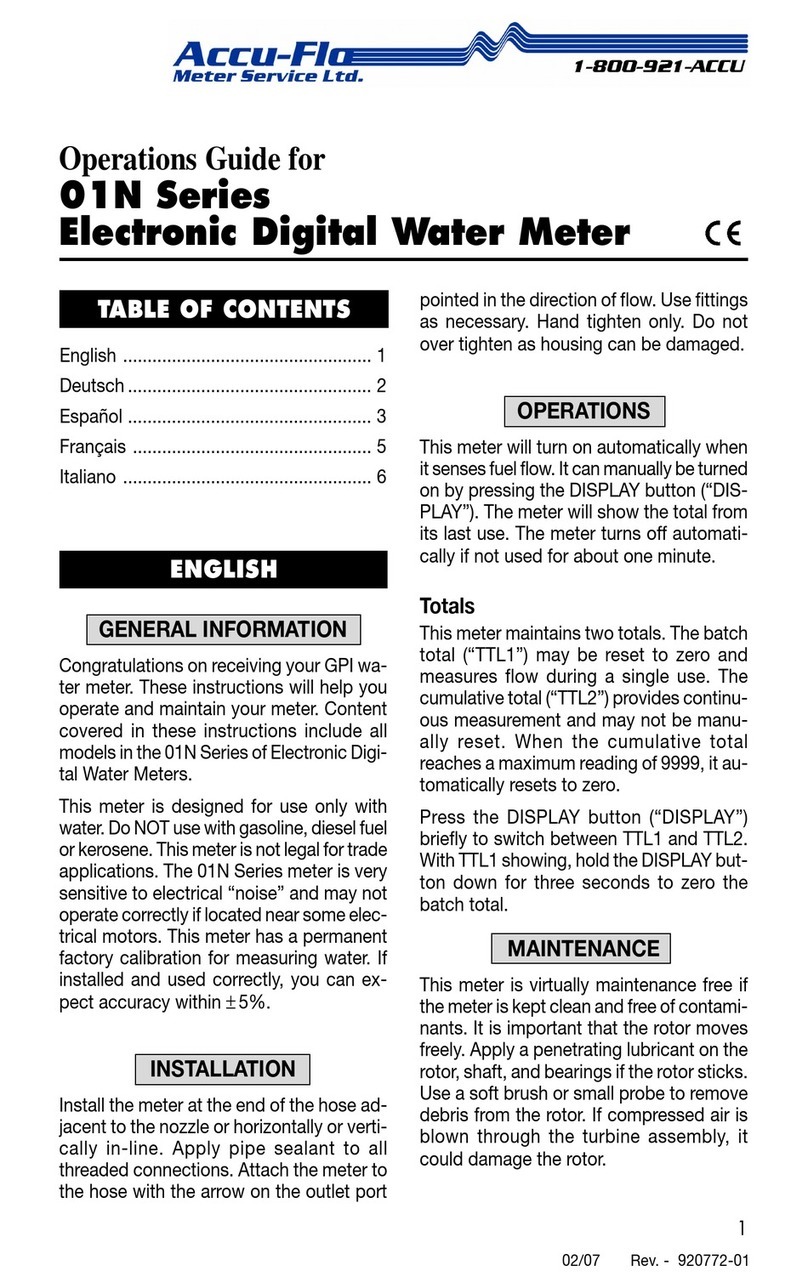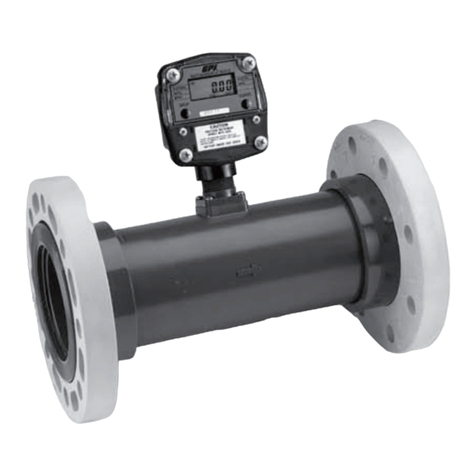
5. Depress the emergency stop button and allow the valve to close. At this point the leakage
between the valve and the register must be free. If it is not, the above adjustments must be
rechecked.
6. Set the register to deliver the minimum quantity and open the valve to run product through
the flowmeter.
7. After the initial trip occurs the valve should close to the intermediate flow position. This rate
will vary depending on product metered. If the valve closes too far, or all the way, adjust nuts
(P) to provide additional rod length.
8. It is sometimes necessary to change the position of the handle. This can be done by loosen-
ing handle screw (B) and repositioning the handle as follows: if the register mechanism will
not latch up, position the handle further toward the register. If the valve will not close, the
handle may be positioned away from the register. Fine adjustments may be made by chang-
ing the effective length of connecting rod (G) utilizing nuts (P). Effective length of connecting
rod (G) may also be varied by positioning the end of the rod in the upper or lower holes in the
valve handle.
9. The Auto-Stop trip adjusting screw should be near its mid-position.
To Adjust The Tripping Point
The flowmeter is shipped from the factory with Auto-Stop mechanism adjusted to trip correctly
at maximum rates of flow while the flowmeter is measuring a non-viscous liquid. Trip adjustment
after final installation may be necessary due to differing flow rate and/or viscosity.
If the Auto-Stop does not trip off at the correct mark due to a change in the speed of closing of
the valve, different rates of flow, or any other reason, the adjustment is made as follows:
Remove the screw located in the lower right corner of the front housing. Insert a medium-sized
screwdriver into this hole until it engages the slotted head of an adjusting screw. One turn of this
screw will change the tripping point about one-quarter of one graduation of the first wheel.
If the Auto-Stop trips before reaching the zero mark, turn the adjusting screw in a clockwise
direction.
If the Auto-Stop trips after the zero mark, turn the adjusting screw in a counterclockwise direction.
11⁄2″″
″″
″PRESET MODEL WITH DOUBLE TRIP VALVE
To Rotate Register
When the flowmeter is assembled as a left-hand assembly and it is desired to change it to a
right-hand assembly, or vice versa, proceed as follows:
1. Remove clevis pin (E) from valve linkage.
2. Unscrew the outside register link lock nut (P) and remove connecting rod (G) and clevis (F)
as a unit.
3. Remove register link (N), rotate 1/2 turn and reassemble onto register as described in ap-
propriate valve adjustment instructions.
4. Loosen two clamp screws on lower front of register, lift register up and turn register 180°.
5. Remove operating shaft cap screw (C) on both sides.
6. Interchange connecting rod arm (H) and valve operating handle (A). The connecting rod arm
must be assembled with notches (J and K) in specific relationship. (See item 3 of valve
adjustment instructions for details regarding position of notches.)
7. Reassemble operating shaft cap screws (C).
8. Remove valve handle stop set screw (B) and screw into hole on opposite side of valve.
To Adjust The Tripping
Point
11⁄2″″
″″
″PRESET MODEL
WITH AUTO-STOP
VALVE
To Rotate Register
Page 5































